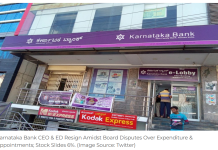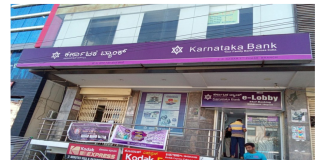RBI measures won’t affect existing customers. Similar measures could be taken for larger banks that faced recent outages
Topics
HDFC Bank | RBI | Digital banking
Subrata Panda & Anup Roy | Mumbai Last Updated at December 4, 2020 01:20 IST
The Reserve Bank of India (RBI) on Thursday morning directed the country’s largest private sector lender, HDFC Bank, to temporarily halt all its digital launches as well as new sourcing of credit card customers, following various outages the bank faced due to technical glitches in the past two years.
“The RBI has advised the bank to stop i) all launches of the digital business generating activities planned under its programme ‐ Digital 2.0 (to be launched) and other proposed business generating IT applications and (ii) sourcing of new credit card customers. In addition, the order states that the bank’s board examines the lapses and fixes accountability,” HDFC Bank said in a notification on exchanges in the morning.
The RBI action came after the bank customers faced a number of incidents of outages in internet banking, mobile banking, and payment utilities of the bank over the past two years. On November 21 this year, the bank faced outages in its internet banking and payment system due to a power failure in the primary data center.
In December 2019, HDFC Bank faced a two-day outage that affected its net banking and mobile banking operations. Following this outage, the RBI had assessed the situation and had sent a team to identify the reason. A year before that, in November 2018, the bank had launched a new version of its mobile banking application. But its customers struggled to log in and the bank was forced to withdraw the new application and restore the old one.
The bank’s managing director and CEO Sashi Jagdishan, in a letter to customers, apologised for “sometimes, not being able to live up to your (customers) expectations”. He assured that the existing customers can continue to transact with the bank without any concern.
“Some of our strategic digital initiatives to improve the front-end digital experience, improve digital origination, straight through processing, next generation of mobile and internet banking, APIs based banking on the edge etc would now be readied and launched post the approval and clearance from regulator,” Jagdishan wrote in his letter.

He said when the past outages happened, the bank had already taken help from external experts, “understood what needs to be done further and have substantially implemented the inputs to strengthen our IT infrastructure and systems.” But the November 21 power outage was unexpected. “We are working on war footing to strengthen this area also now,” he said.
The current measures will be lifted by the RBI once it is satisfied that the bank is in compliance with major critical observations it has made concerning the bank, said the bank in its filing.
HDFC Bank’s was panned severely on social media for its outages, but recently customers of some other large banks, including among public sector banks, have also complained of similar experience. The central bank is expected to crack its whip on these banks as well.
“This just shows that banks have perhaps let their guards down despite the RBI warning them time and again. It’s time that the regulator act a little harshly with them, particularly the big ones,” said a senior banker requesting anonymity.
Of late, outages have become frequent in banks. On the same day when HDFC Bank was pulled up by the regulator, State Bank of India said its YONO mobile banking application “has been impacted due to system outage.”
But HDFC Bank’s long outages also perhaps violated RBI’s laid out rules on the matter.
Independent analyst Hemindra Hazari pointed out on his website that the RBI’s guidelines on business continuity planning (BCP), are explicit in that the recovery time objective (RTO), “must ensure that the Minimum Tolerable Period of Disruption (MTPD), for each activity, is not exceeded.” The bank was also supposed to carry clear communication on its outages and efforts to mitigate them, which the bank did not follow through properly, Hazari pointed out.
According to the RBI data, at the end of September this year, HDFC Bank had 1.49 crore outstanding credit cards in the market, making it the market leader in credit cards.
After the RBI’s stern directive to HDFC Bank, restricting its future activities temporarily, shares of the bank’s immediate competitors jumped. Shares of HDFC Bank closed 2.13 per cent down at Rs 1,377.05 a piece on the BSE. Shares of SBI Cards and Payments Services, HDFC Banks’ biggest rival in the credit cards space, zoomed 5.31 per cent to Rs 839.20. The country’s largest lender, State Bank of India, closed 3.87 per cent higher at Rs 256.35 per share on the BSE.














